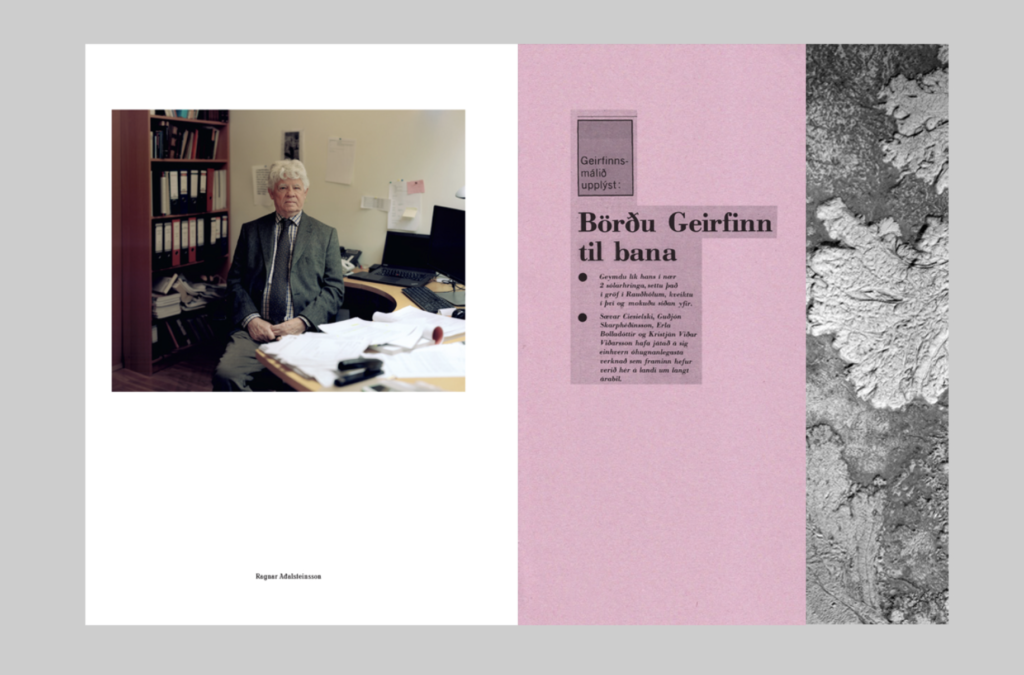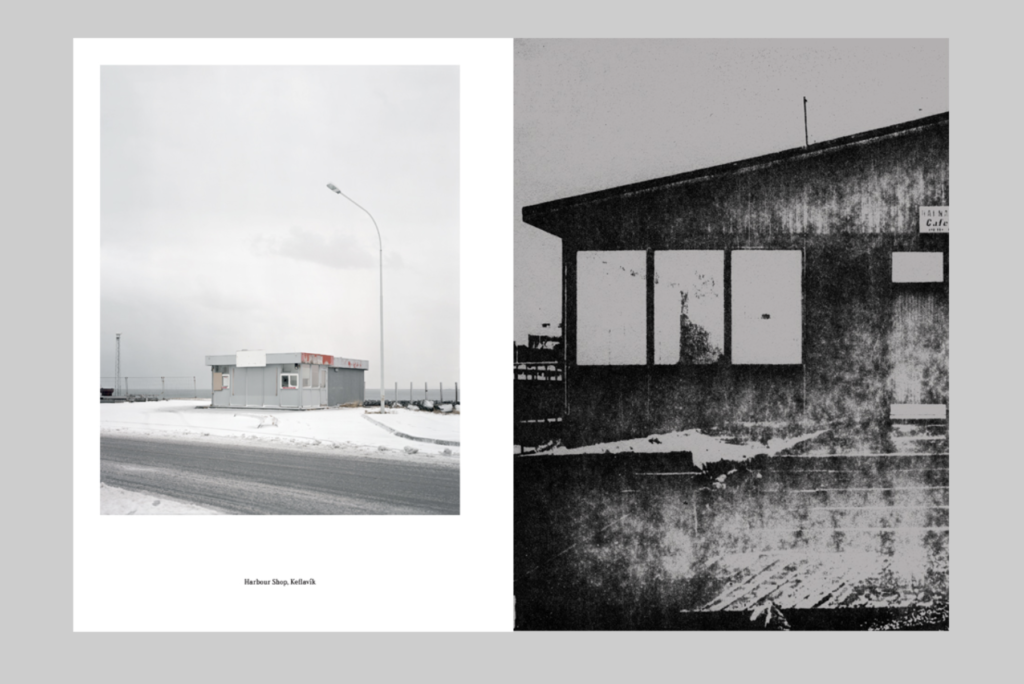Sugar Paper Theories – Jack Latham
Sugar Paper Theories is Jack Latham’s second major project in response to a notorious unsolved double murder investigation in Iceland.
This video interview with Jack Latham helps to explain the circumstances of the case and the photobook that resulted from the work he made in Iceland:
- How might fear and suspicion, a sense of isolation, an unforgiving climate, concerns about cultural changes and deep seated folklore traditions, help to create a situation where innocent people are arrested, questioned, charged and convicted of crimes they did not commit?
- What might have caused those convicted to confess to these crimes? What is Memory Distrust Syndrome and how do people become a victim of it?
- How do we use photographs to help us remember?
- How reliable are our memories? How reliable are photographs as a form of evidence?
Narrative:
Sugar Paper Theories tells and documents the various places and people that feature in various accounts of what happened forty years ago when two men went missing in southwest Iceland. The narrative is told using various new photographs of the places produced by Latham himself as well as archival material of photographs as well as information sheets e.g. newspapers, the narrative is told with each disappearance separately and moving from one conspiracy about each to the other. Using police files he immersed himself into all aspects of the case including key protagonists and sites from the investigation as well as conspiracy theories, forensic science to the notion of Memory Distrust Syndrome, Latham’s project examines issues of evidence and truth, certainty and uncertainty, especially with regard to memory and the medium of photography.

Jack Latham ‘Sugar Paper Theories’
Deconstruction:
Book in Hand: The book is 310 x 230mm and is a soft cover to the touch, a very distinct smell sets itself in the book as the front and back cover are both the material of sugar card and the papers inside consist of sugar paper creating a distinct smell
Paper and ink: Sugar Paper Theories uses various types of paper from sugar paper, held in the title, and a thick matt photo paper, which holds a lot of the colour and archival material depicting specific places or people, the sugar paper on the other hand holds black and white photographs speak across the page into slightly unclear images. It also contains smaller matt pages that are thin they are almost transparent which holds some of the informations as well as the cut down sugar paper inserts.
Format, size and orientation: The book is portrait 310 x 230mm in a rectangular shape, overall there are 46 colour photographs, 37 black and white photographs, 8 illustrations, 9 press cuttings.
Binding: It is a soft cover book with a saddle stitch holding together, there is an image wrap across the front and back cover of a drawing of a potential theory from the case. The spine has a fabric cover over that bleeds around a cm onto the front and back. Bound in the same style as the police case files that Latham

Jack Latham ‘Sugar Paper Theories’ 
Jack Latham ‘Sugar Paper Theories’
Cover: The cover itself is a thick sugar paper, a yellow tinted colour with a hand drawn image spread across of one of the potential theories in felt tip and biro. Could be from a local citizen rather than a legal investigation theory from the connotations of drawn on sugar paper using green felt tips.
Title: The title of the Photobook is inspired by Latham’s findings while out in Iceland, he found a timeline of events mapped out of sugar paper of a conspiracy theorists desk which eventually inspired the title and cover of the book.
Structure and architecture / Editing and Sequencing: The sequencing alludes to the dubious interrogation technique employed by the police, where they asked questions out of chronological order. Latham uses inserted different sized papers to introduce the elements of police files and evidence, another structure element is the French fold found in the book Latham uses so the reader cannot see the ‘full picture’ developing a sense of ambiguity around what it is or maybe what is going on.
Design and layout: Sugar paper theories leaves near to no blank pages, landscape photographs are often presented on half the portrait pages rather than across the double page and those which are presented larger are folded over with a French Fold.
Images and text: There is no introduction text from Latham however text is used heavily in Sugar Paper Theories, using evidence notes and police files on the inserts, it adds context to some photographs as well as making everything more confusing by showing what was said and found as it was, is, a puzzling case anyway, text is also linked with the photographs to landmark them, names of places and peoples and linking them to the different conspiracy’s≥

Jack Latham ‘Sugar Paper Theories’
